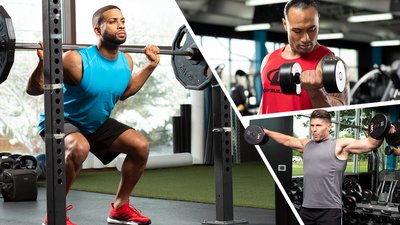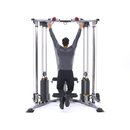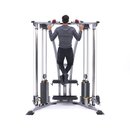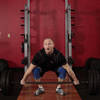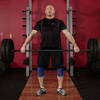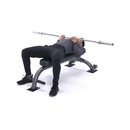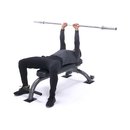In life, business, and training, the rule to succeed is simple: prioritize what's important, and get rid of the rest. No one wants to waste their time in the gym. Get in, do what you need to do, and get out!
Ask any seasoned lifter what's important, and they'll tell you to squat, deadlift, press, and pull. Every program should contain some form of those compound movements where heavy loads are used and multiple joints come into play.
But are they all you need? Definitely not! You also need smaller, lighter movements to bring up weak links, maintain or improve balance, and to fill the gaps that lurk between the big rocks.
The question, of course, is how to have all the benefits of big and small moves, in the same program, at the same time. Here's how to do it.
Big rocks, pebbles, and sand
To start, set your workout schedule for four days a week—and stick to it. For most individuals, training once a week is useful for maintenance only, twice a week works for strength gains but no significant morphological changes, 3-4 times is ideal for muscle strength and size gains, and five or more days will lead to diminishing returns. You can train on Monday, Tuesday, Thursday, and Friday if you wish to keep your weekends free, or train on Saturday, Sunday, Tuesday, and Thursday if weekends work better for your schedule.
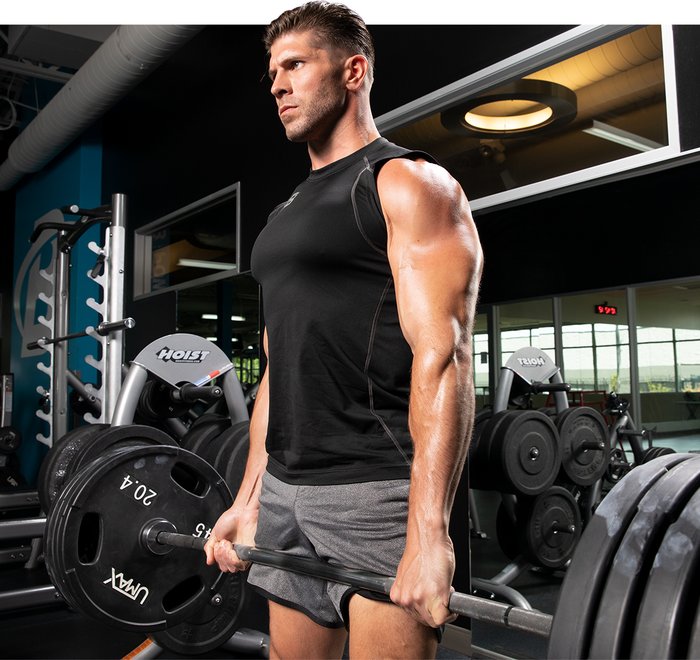
Now, let's build the program. It starts, as it should, with those big compound movements. I like to call them the "big rocks" of strength training. All of your deadlifts, squats, presses, and pull-ups go in this category. During this program, you'll focus on just one of them each day.
After the "big rocks," you need to fill some of your training time and effort with "pebbles." These are the single-joint, isolation movements that train flexion or extension of the muscles of the upper and lower limbs. Your biceps curls, triceps extensions, and leg curls and extensions go here. As with the big rocks, you'll do one of these a day.
Then there's the third category: sand. These are true "filler" exercises, but that doesn't mean they're not important. On the contrary, you'll do them for every single workout for a few weeks! You'll pick one or two exercises in this category either for aesthetic purposes to improve muscle balance and symmetry, strength purposes to bring up the weak link of the chain, or conditioning purposes to strip off a layer of fat or to simply make it up a flight of stairs without keeling over.
Big rocks, followed by pebbles, followed by sand. That's what your training should consist of. Here's what it looks like in action:
Paired sets
- A1. Squat variations, deadlifts, standing/seated/lying presses, pull-ups and rows
- A2. Elbow/knee flexion/extension
Straight sets or supersets
- B1/B2. Wrist/ankle flexion/extension, shoulder/hip prehab exercise, core-based movement, lagging muscle, conditioning
And here's an example of what it could look like in the gym:

BodyFit
$6.99/month- 2,500+ expert-created single workouts
- 3,500+ how-to exercise videos
- Detailed workout instruction
- Step-by-step workout tips
- Training at gym or at home
- Access to Workout Plans
- Access to Bodyfit App
- Store Discounts
Already have a Bodybuilding.com account with BodyFit? Sign In

What comes with BodyFit?

- Instructional Videos
Don't risk doing a workout improperly! Avoid injury and keep your form in check with in-depth instructional videos.

- How-to Images
View our enormous library of workout photos and see exactly how each exercise should be done before you give it a shot.

- Step-by-Step Instructions
Quickly read through our step-by-step directions to ensure you're doing each workout correctly the first time, every time.

BodyFit
$6.99/month- 2,500+ expert-created single workouts
- 3,500+ how-to exercise videos
- Detailed workout instruction
- Step-by-step workout tips
- Training at gym or at home
- Access to Workout Plans
- Access to Bodyfit App
- Store Discounts
Already have a Bodybuilding.com account with BodyFit? Sign In

What comes with BodyFit?

- Instructional Videos
Don't risk doing a workout improperly! Avoid injury and keep your form in check with in-depth instructional videos.

- How-to Images
View our enormous library of workout photos and see exactly how each exercise should be done before you give it a shot.

- Step-by-Step Instructions
Quickly read through our step-by-step directions to ensure you're doing each workout correctly the first time, every time.

BodyFit
$6.99/month- 2,500+ expert-created single workouts
- 3,500+ how-to exercise videos
- Detailed workout instruction
- Step-by-step workout tips
- Training at gym or at home
- Access to Workout Plans
- Access to Bodyfit App
- Store Discounts
Already have a Bodybuilding.com account with BodyFit? Sign In

What comes with BodyFit?

- Instructional Videos
Don't risk doing a workout improperly! Avoid injury and keep your form in check with in-depth instructional videos.

- How-to Images
View our enormous library of workout photos and see exactly how each exercise should be done before you give it a shot.

- Step-by-Step Instructions
Quickly read through our step-by-step directions to ensure you're doing each workout correctly the first time, every time.

BodyFit
$6.99/month- 2,500+ expert-created single workouts
- 3,500+ how-to exercise videos
- Detailed workout instruction
- Step-by-step workout tips
- Training at gym or at home
- Access to Workout Plans
- Access to Bodyfit App
- Store Discounts
Already have a Bodybuilding.com account with BodyFit? Sign In

What comes with BodyFit?

- Instructional Videos
Don't risk doing a workout improperly! Avoid injury and keep your form in check with in-depth instructional videos.

- How-to Images
View our enormous library of workout photos and see exactly how each exercise should be done before you give it a shot.

- Step-by-Step Instructions
Quickly read through our step-by-step directions to ensure you're doing each workout correctly the first time, every time.
Basically, you have a squat paired with an arm curl, a pull-up or row paired with a leg curl, a deadlift paired with a triceps extension, and a press paired with a leg extension. Alternating the heavy, demanding big rocks with lighter, non-competing pebbles will help you manage fatigue and get more work done by the end of the day.
Following those main exercise pairs, you have a pair of exercises that are repeated every workout which focus on lagging body parts. In this case, shoulders (medial deltoid) and calves (gastrocnemius).
Sounds like a simple plan, but don't be fooled! Once we get into the nitty gritty, you'll see there's quite a bit built into it. Plus, the autoregulation mechanisms I've built into this program will ensure constant results over the long haul.
How many reps should I do?
The general rep range on the big movements is up to you and your goals. If you're chasing strength, start with 3-5 reps per set; hypertrophy, 8-10 reps; and muscle endurance, 18-20. But here are three cardinal rules to guide you on these movements:
The 3-rep rule: Once your performance on a big lift drops 3 reps or more from what you did on the first set, terminate the exercise. That's it—don't go any further with that exercise. That may happen after 10 sets or it may happen after 2 sets. So be it! If you do 10 reps on the first set, 9 reps on the second set, and 7 reps on the third set, you're done.
Trust me, if you stop there, you'll make progress the next workout. If you try to push on, you'll fail to make progress your next workout, assuming you don't get injured in the process.
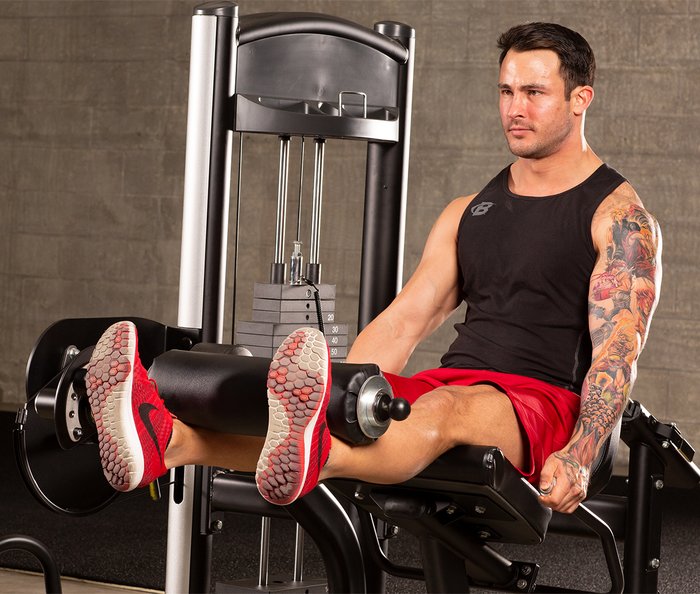
The 3-set rule: If you did 3 or fewer working sets on a big rock during the previous workout, stick with the same weight and try to do more sets. Work on volume rather than intensity. Let your body get used to the weight by doing it repeatedly before going heavier. Piling on more and more weight every workout is not the answer! Be smart and your body will reward you for your patience and maturity.
The 60-minute rule: These workouts should never exceed 60 minutes. Go as long as you can for up to 60 minutes, and then stop. Just because you haven't reached a 3-rep drop doesn't mean that you should go on forever! There has to be a point where you stop training, and in my opinion, that happens around the 60-minute mark. Wrap up the "A" exercises a few minutes before that point to leave at least 5-10 minutes for the "B" exercises. If you have quite a bit left in the tank, you went too light, so make sure to go heavier next time.
Why so much sand?
That may seem like a lot of time dedicated to the little stuff. Lateral raises and calf raises four times a week? But here's the thing: If more attention is truly needed for these areas, then you really do need to train them more frequently!
If you look like you're walking on pogo sticks and the tightest notch on your watch is still too loose, training calves and forearms once a week isn't going to solve the problem. If your shoulders are narrower than an Italian street, blasting them only on "shoulder day" leaves them asleep for most of your training week. Want to lose fat? The air bike is calling—and not just every once in a while.
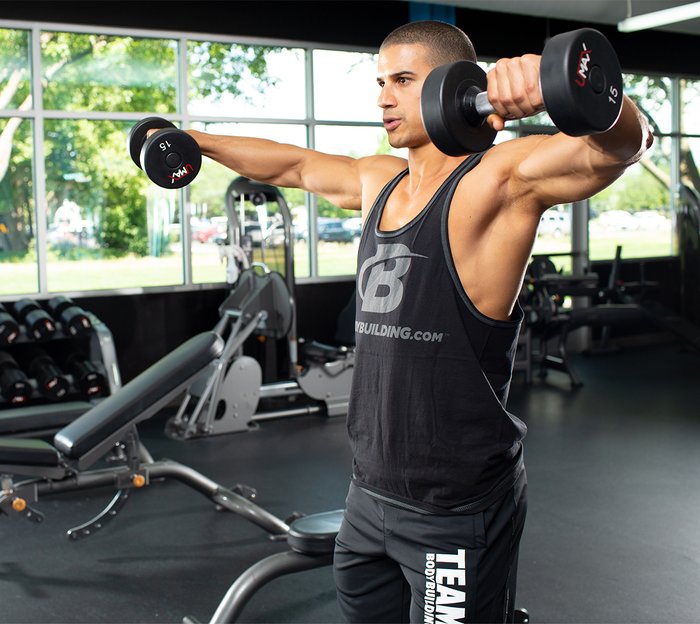
Yes, there's a catch: If you do these movements more frequently, you'll need to do fewer sets. So instead of 4 half-assed sets done once a week, you'll do a single all-out set four times a week. That results in higher quality training done more frequently, and that gets results!
For example, if you plan to do 4 sets of these lateral raises every week as straight sets in one workout, you'll likely lose a rep each set. It would look something like this:
- Set 1: 15 reps
- Set 2: 14 reps
- Set 3: 13 reps
- Set 4: 12 reps
But, if you did those lateral raises in a single all-out set in each of your workouts, you may actually gain a rep each set. It would look more like this:
- Day 1: 15 reps
- Day 2: 16 reps
- Day 3: 17 reps
- Day 4: 18 reps
Instead of decaying 1 rep per set or more, you increase 1 rep per set by spreading them over four workouts. That's a 22-percent difference—66 reps instead of 54—in a week. I'd say that's significant!
When and how do I change things up?
Usually, when a lifter changes their program, they make a complete overhaul. But that doesn't mean everything has adapted fully and that every exercise needed to be changed! On the flipside, some muscles or movements may adapt more quickly and should be changed sooner. Hanging on to some of these "stagnant" exercises for too long while trying to force adaptation is an invitation for injury.
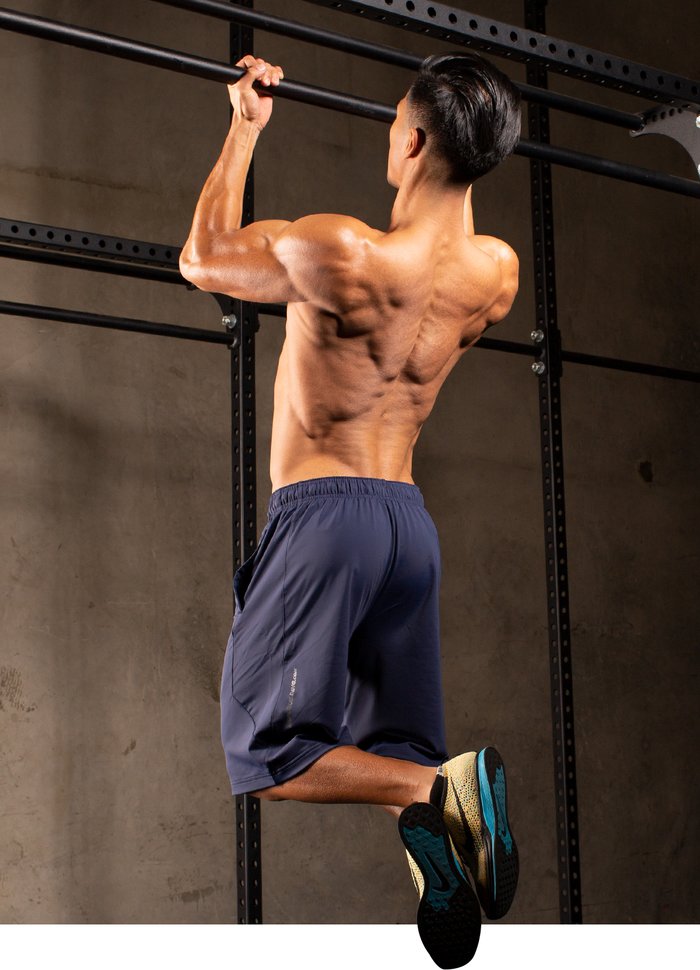
The answer: When you've reached a peak on a particular exercise and you're no longer able to safely and effectively nudge the numbers upward, change that exercise, not the entire routine!
For the example program above, you could switch from:
- Wide-stance back squat to 1-1/4 front squat
- Snatch-grip deadlift to high-handle trap bar deadlift
- Wide-grip pull-up to close-grip chin-up
- Flat bench press to high-incline dumbbell press
- Incline dumbbell curl to a seated reverse-grip preacher curl
- EZ-bar triceps extension to standing rope press-down
- Lying leg curl to a standing leg curl
- Seated leg extension with both legs to one leg at a time
Even just a minor change in grip or stance width, implement diameter, or bench angle will be enough.
The magic in training happens when you listen to your body and make changes when they're warranted. Don't confuse that with purely "instinctive training." You still need objective rules to ensure success! But don't let a piece of paper or a smartphone app dictate what you should do. Let your body and your performance decide that for you.


